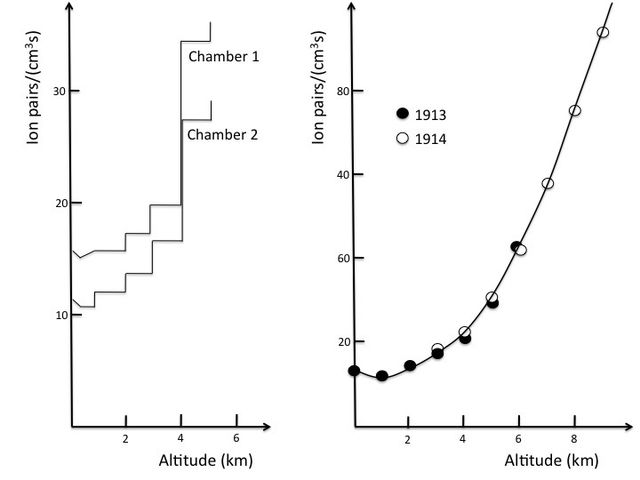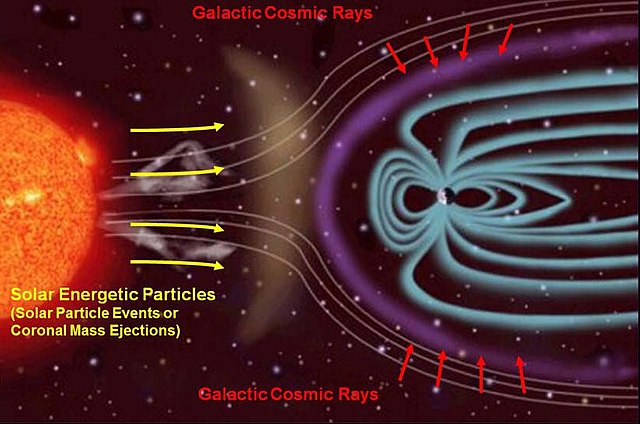A neutron monitor is a ground-based detector designed to measure the number of high-energy charged particles striking the Earth's atmosphere from outer space. For historical reasons the incoming particles are called "cosmic rays", but in fact they are particles, predominantly protons and Helium nuclei. Most of the time, a neutron monitor records galactic cosmic rays and their variation with the 11-year sunspot cycle and 22-year magnetic cycle. Occasionally the Sun emits cosmic rays of sufficient energy and intensity to raise radiation levels on Earth's surface to the degree that they are readily detected by neutron monitors. They are termed "ground level enhancements" (GLE).
An overview of the space environment shows the relationship between the sunspot cycle and galactic cosmic rays.
Ground Level Enhancement — September 1989.
Cosmic rays or astroparticles are high-energy particles or clusters of particles that move through space at nearly the speed of light. They originate from the Sun, from outside of the Solar System in our own galaxy, and from distant galaxies. Upon impact with Earth's atmosphere, cosmic rays produce showers of secondary particles, some of which reach the surface, although the bulk are deflected off into space by the magnetosphere or the heliosphere.
Pacini makes a measurement in 1910.
Increase of ionization with altitude as measured by Hess in 1912 (left) and by Kolhörster (right)
Hess lands after his balloon flight in 1912.
Sources of ionizing radiation in interplanetary space.






